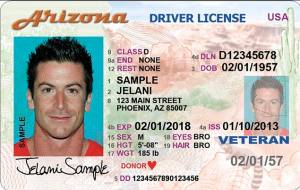
In today’s article, we are going to talk about a few must-know features to authenticate ID cards. Today, recognizing fake ids are getting increasingly difficult for the people who are in business to identify fake ids, such as a bar employee. Underage drinking is prohibited by law; hence, as a bar bouncer, you’re required to check each and every id card produced by teenagers to know if they are really at the age of drinking. With advanced technology, the scannable fake id business is thriving, and most of their customers are teens who just want to have some fun. If you work in a job that requires you to check IDs for validity, we have put together a list of some different features on US and Canadian IDs that you should know so you can find fake IDs and validate good ones only. So, let’s see how you can tell if an id is real or fake.
Ghost image and overlapping data
As we go through these features, there are going to be a few different ways to locate these fake IDs. The first feature is a ghost image, and a ghost image is a smaller version of the original picture on the ID just in a more translucent state. Ghost images are usually coupled with a feature called overlapping, which we’ll talk about now. This is the second feature that is called overlapping, and it is another type of element you need to be looking for to detect a fake ID. It’s a visual feature that basically means that they are going to take different assets such as the state seal, signatures, or the text itself of the ID and it actually got to cross over into pictures or intersect with other different elements to make sure that they cross at various points throughout the ID. This feature makes it extremely difficult for fake ID manufacturers to reproduce. Now we should bear in mind that not all these features are going to be used on every ID, and there’s going to be mixes and matches throughout different IDs, throughout the country and throughout the world. So you need to be aware of what these features are.
Fine line

Next is a type of feature, which is a visual feature, and this is what we call the fine line. Basically what it is is a series of lines that intersect with each other making a ribbon look across in your ID. This is a pattern of continuous lines that starts with at least two lines or more and basically branches out to make a lace type of appearance across that front of the ID.
Laser engraving:
The fourth kind of security feature that we find on the ID is what we call laser perforations. There’s a little area on the ID itself that is actually laser cut with a laser beam to make tiny holes in it to make some sort of shape on the ID itself. For example, Arizona, California, and a few other states have implemented this feature already. It’s a cone shape laser cut, so it’s bigger at the top, and it narrows down through the bottom. What you need to do is take a flashlight across the back of the ID so you can actually visually see the different designs that they put in there using the laser perforation.
